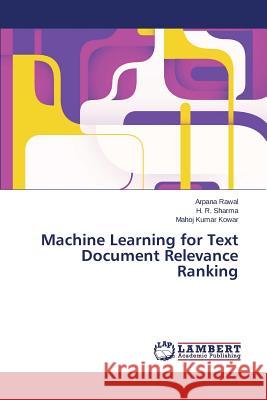Machine Learning for Text Document Relevance Ranking » książka
Machine Learning for Text Document Relevance Ranking
ISBN-13: 9783659233456 / Angielski / Miękka / 2014 / 180 str.
The context oriented information retrieval has always been based on some or the other explicit ontologies. The emphasis is laid on on the Implicit Ontologies extracted from input text documents themselves. The research focuses upon design of a system (tool) to rank text documents available in machine-readable format by analyzing them upon softcopies of the syllabus content, through congenial content filtering techniques. The notion of n-gram co-occurrences is used to give the semantic interpretation to the core sentences and their neighboring components. The semantic depths of search key phrases can be learnt by analyzing term-to-term associations from the underlying conceptual dependencies of the extracted content. Two metric measures were chosen for exploring text-semantic depths namely, Topical boundaries and Topical vicinities. The degree of relative relevance was investigated by computing other relevance metric, contextual levels of term-significance from the filtered pages with meaningfully related content. The text-document ranking results were compared for both relevance number and fuzzy-ordering approaches and were found interpretable in finite directions.
The context oriented information retrieval has always been based on some or the other explicit ontologies. The emphasis is laid on on the Implicit Ontologies extracted from input text documents themselves. The research focuses upon design of a system (tool) to rank text documents available in machine-readable format by analyzing them upon softcopies of the syllabus content, through congenial content filtering techniques. The notion of n-gram co-occurrences is used to give the semantic interpretation to the core sentences and their neighboring components. The semantic depths of search key phrases can be learnt by analyzing term-to-term associations from the underlying conceptual dependencies of the extracted content. Two metric measures were chosen for exploring text-semantic depths namely, Topical boundaries and Topical vicinities. The degree of relative relevance was investigated by computing other relevance metric, contextual levels of term-significance from the filtered pages with meaningfully related content. The text-document ranking results were compared for both relevance number and fuzzy-ordering approaches and were found interpretable in finite directions.











